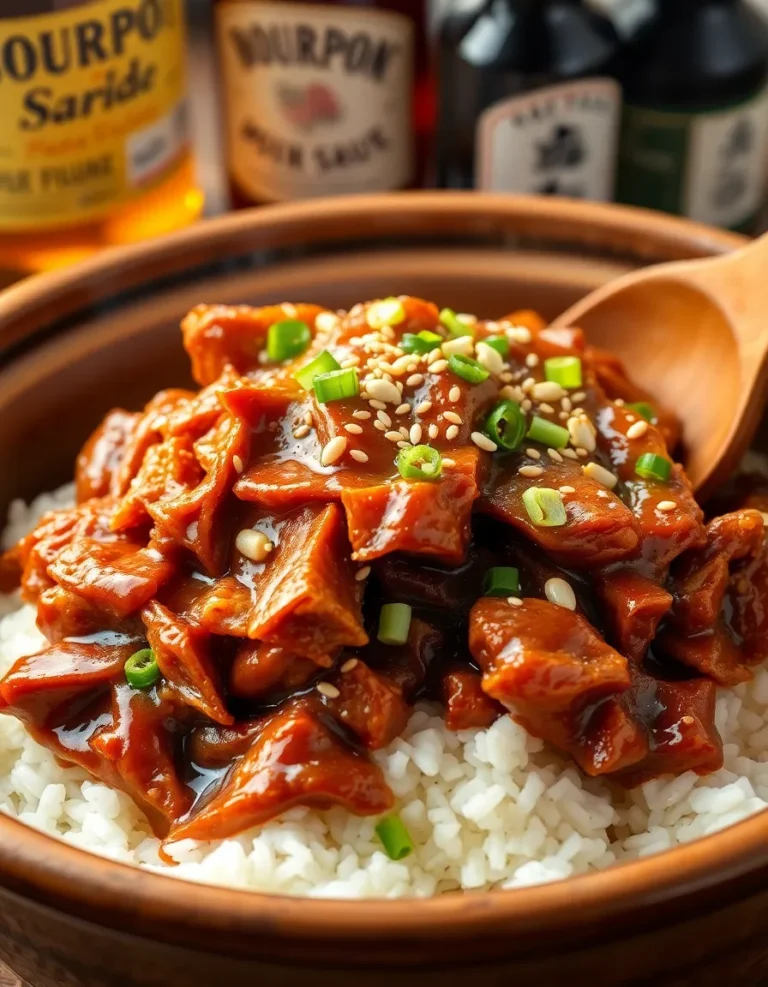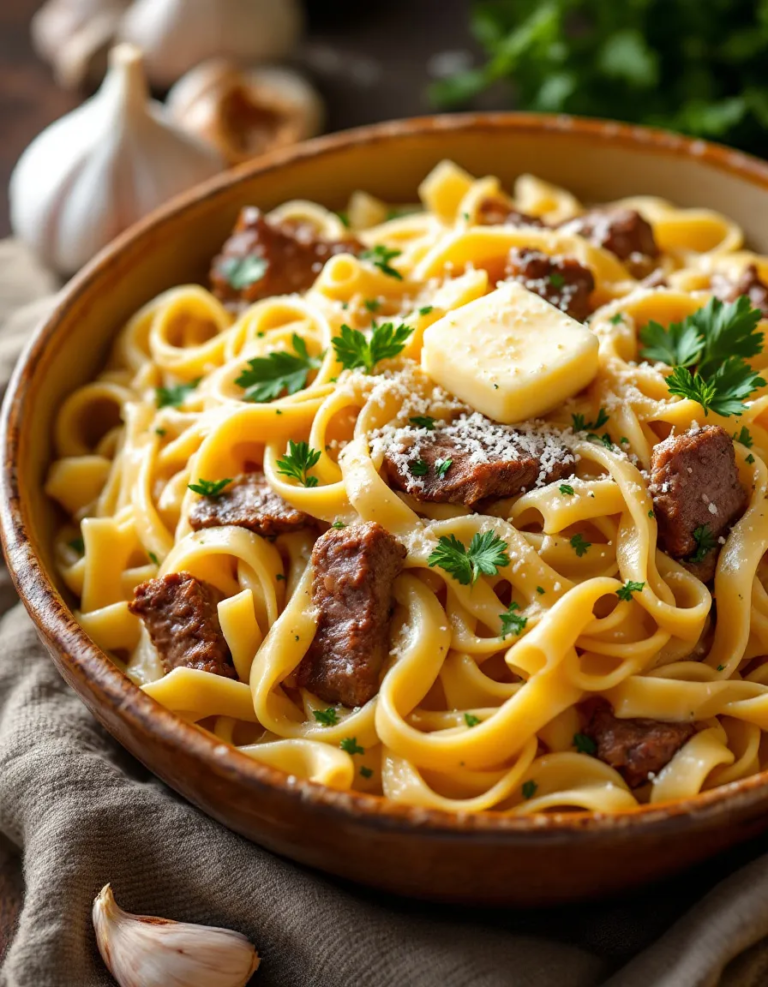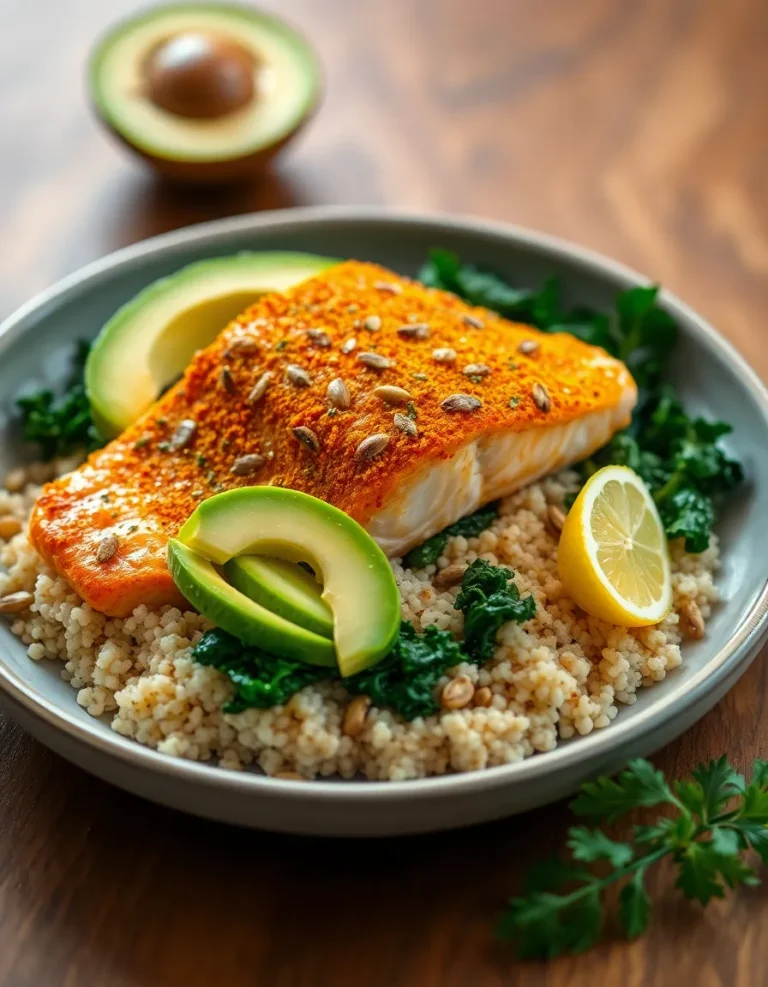Best Guinness Beef Stew – Family Favorite & Easy Recipe
Best Guinness Beef Stew – Family Favorite & Easy Recipe
Welcome to the ultimate comfort food experience with this Best Guinness Beef Stew – a cherished family favorite that’s easy to prepare and hard to resist! This hearty dish combines the rich, robust flavor of Guinness beer with tender chunks of beef and root vegetables, creating a stew that warms both the heart and soul. Each spoonful offers a delightful balance of savory taste and luscious textures, making it a perfect meal for family gatherings or cozy dinners.
Quick Recipe Highlights
- Flavor Profile: Deep and complex with notes of rich beef, earthy vegetables, and the unmistakable malty flavor of Guinness.
- Texture: Melt-in-the-mouth beef with tender, wholesome veggies enveloped in a silky broth.
- Aroma: An inviting mix of roasted malts, sweet onions, and herbs creates a smell that’s as comforting as it is appetizing.
- Visual Appeal: A vibrant medley of colors from carrots and potatoes besides the dark, rich broth.
- Skill Level Needed: Basic culinary skills are enough to create this dish, making it accessible to even novice cooks.
- Special Equipment: None needed, just a sturdy Dutch oven or large pot to lock in those flavors.
Recipe Overview
- Difficulty Level: With straightforward steps and no advanced techniques, it’s an easy dish for beginners to master, while still allowing seasoned cooks to showcase their skills.
- Category: Falls under sumptuous main courses perfect for cold days or family gatherings.
- Cuisine: A traditional Irish classic, it blends the rustic charm of European stews with the bold flavors of Guinness.
- Cost: Relatively economical since it mostly uses budget-friendly ingredients, making it accessible for all.
- Season: Ideal for autumn and winter, when a hearty stew is most comforting.
- Occasion: Suits casual dinners, weekend family meals, or St. Patrick’s Day celebrations.
Why You’ll Love This Recipe
This Guinness Beef Stew captures both taste and texture appeal in a way that satisfies the soul. The slow-cooked beef is incredibly tender, complemented by a rich broth infused with the malty depth of Guinness, perfecting the flavor balance that keeps everyone asking for seconds. Its convenience lies in simple preparation steps and allowing the stew to simmer, letting the flavors meld beautifully over time with minimal effort required on your part.
Nutritionally, this stew is packed with protein from beef, fiber from vegetables, and essential vitamins such as vitamin A from carrots, contributing to a well-rounded meal. Whether entertaining guests or feeding your family, it fosters a communal feeling, transforming any gathering into a heartfelt feast. Cost-effective and using easily available ingredients, it’s a recipe that fits nicely into most weekly meal plans without breaking the budget.
Historical Background and Cultural Significance
Originating from Ireland, Guinness Beef Stew symbolizes the robust, hearty meals that have comforted families for generations. Its roots can be traced back to Irish pub culture, where stews were a common offering, often accompanied by a pint of beer. Over the years, this dish has evolved, incorporating various local ingredients to suit regional palates, yet its essence remains untouched.
Culturally, it’s a testament to Irish ingenuity in turning modest, accessible ingredients into something extraordinary. The evolution of the recipe shows how a traditional dish adapts to modern kitchens while retaining historical elements. Regional variations exist, with some adding tomatoes or peas, yet each still honors its origins by featuring the star of the show: Guinness.
Ingredient Deep Dive
Beef chuck, the heart of this stew, owes its popularity to its perfect balance of muscle and fat, ensuring melt-in-the-mouth tenderness when cooked slow and low. Nutritionally, it’s a powerhouse of protein, iron, and zinc, promoting muscle repair and a healthy immune system. When selecting, opt for well-marbled pieces; it’s key to that rich texture, and always store domestically-raised, fresh portions in the fridge for no more than 3-5 days for optimal quality. For substitutions, lamb can be a savory alternative.
Carrots bring a burst of color and sweetness to the stew, with their cultural significance tied to wholesome, rustic cooking. Packed with beta-carotene, a precursor to vitamin A, they support vision and immune function. When choosing, pick firm, bright-colored carrots, keeping them in a cool, dry place up to two weeks. For alternatives, turnips can provide a similar texture and flavor.
Common Mistakes to Avoid
- Overcooking the beef: It can make the meat tough; instead, simmer on low for tenderness.
- Under-seasoning: Don’t skimp on salt and pepper or the dish will taste flat.
- Using high heat: This can lead to a burnt stew; maintain a low temperature.
- Adding vegetables too early: Overcooked veggies turn mushy; add them halfway through cooking.
- Ignoring liquid levels: Too little can dry out the stew; too much dilutes flavor. Adjust as needed.
- Insufficient browning: Failing to sear the beef correctly misses out on valuable flavor.
- Not letting stew rest: Allowing it to sit enhances the flavor, making the wait worth it.
- Forgetting to deglaze the pot: Be sure to scrape up those flavorful bits after browning the beef.
- Skipping aromatics: They add depth; don’t omit onions and garlic.
- Choosing the wrong beer: Stick with a stout like Guinness for the classic flavor profile.
Essential Techniques
Browning the beef is fundamental because it develops a deep, savory flavor through the Maillard reaction, a chemical reaction between amino acids and reducing sugars. To master it, ensure the pan is hot, not overcrowded, and let the meat caramelize undisturbed before turning. Common pitfalls include stirring the beef too soon, which prevents proper browning, and using a pan that’s too cold, leading to uneven cooking.
Deglazing the pot with Guinness is pivotal, allowing those rich confectionery bits stuck at the bottom to loosen, which amplifies the stew’s depth and taste. To succeed, pour a small amount of Guinness and ensure you scrape well with a wooden spoon. Visual cues include seeing the browned bits dissolve into the liquid for a rich base flavor.
Simmering at a low temperature ensures the beef becomes tender without the stew losing its precious moisture. Use a well-fitting lid to trap steam, adjusting heat until a gentle bubble appears. Success is shown by meat that breaks apart easily with a fork and vegetables that are perfectly tender.
Pro Tips for Perfect Best Guinness Beef Stew
Use full-bodied stout for an authentic flavor punch, avoiding lagers that lack depth. Cut meat and vegetables uniformly to ensure even cooking. For a thicker stew, mash a few potatoes directly in the pot towards the end of cooking. Rest the stew for a day to elevate the flavors, creating an even richer taste profile next day. If short on time, a good-quality beef stock can replace some of the Guinness for a quicker depth boost. Searing meats and sweating onions separately adds distinct layers of flavor, enhancing complexity.
Variations and Adaptations
Regional variations often include different veggies; in Europe, rutabaga is popular, while in America, parsnips might appear. Seasonally, adding fresh herbs like parsley or thyme in spring can introduce brightness to the dish. For those on a gluten-free diet, ensure to pick a certified gluten-free stout or replace it with beef broth and a splash of balsamic vinegar for similar depth. To reduce carbs, replace potatoes with cauliflower or zucchini.
Serving and Presentation Guide
Serve your stew in rustic earthenware bowls for an authentic feel, complementing the dish’s rich character. Garnishing with freshly chopped parsley adds a pop of color and a hint of freshness. Traditional accompaniments include crusty bread or mashed potatoes to soak up the rich broth, but it can be modernized with a side of lightly dressed salad for a refreshing contrast. Consider serving bouts of warm, comforting stew amidst a lively table setting, perfect for soaking up the friendly atmosphere.
Wine and Beverage Pairing
Pair this exquisite stew with a robust red wine, such as a Cabernet Sauvignon, whose strong tannins balance the rich flavors while highlighting the dish’s complexity. For non-alcoholic options, a sparkling water with a twist of lime can uplift the palate. If coffee or tea is on the menu, opt for Earl Grey whose citrus notes offer a lovely finish. Beverages are best served at a moderate temperature to enhance the overall warmth of the meal.
Storage and Shelf Life
Store the stew in an airtight container to preserve its flavors, and refrigerate it for up to 3 days. Freezing is also an option, lasting for up to 3 months when kept at consistent temperatures, ideal for meal prepping. Ensure to label containers with cooking dates to prevent spoilage. Reheat gently over medium heat to avoid toughening the beef, stirring occasionally until hot throughout, and display visual signs like texture and aroma to confirm quality.
Make Ahead Strategies
Prepare elements like chopping vegetables and browning beef up to a day in advance, refrigerating separately to keep them fresh. This allows for efficient assembly on cooking day, maximizing flavor development. After the stew is cooked, adding fresh ingredients like parsley liven up its taste profile. When reheating, incorporate a splash of Guinness or broth to rejuvenate moisture lost during storage.
Scaling Instructions
When halving, maintain ingredient proportions but adjust spices to taste, ensuring smaller batch consistency. Doubling involves proportionately increasing liquid to submerge ingredients uniformly, with larger pots to accommodate the stew’s volume. Double-check timing adjustments, as increased quantities may require longer cooking. Store leftovers in smaller portions to allow even reheats, enhancing flavor longevity.
Nutritional Deep Dive
This stew offers a balanced macro profile with ample protein from beef, essential fats, and complex carbohydrates from root vegetables. It is rich in micronutrients like vitamin A from carrots and iron from beef, supporting immune function and reducing fatigue. Its nutritive nature makes it an ideal option for hearty, satisfying meals with controlled portion sizes aiding weight management.
Dietary Adaptations
For a gluten-free version, use gluten-free beer or a sturdy beef broth with reduced vinegar for balance. A dairy-free adaptation involves olive oil instead of butter, if used. Vegan versions are achievable by using meat substitutes like seitan or tofu and vegetable broth, complimented by plant-based beers. With its natural components, this stew lines up well with low-carb or keto diets, focusing on vegetable swaps like cauliflower in place of potatoes.
The Recipe
Best Guinness Beef Stew
Serves: 6
Prep Time: 20 mins
Cook Time: 2 hrs
Total Time: 2 hrs 20 mins
Kitchen Equipment Needed
- Large Dutch oven or heavy pot
- Wooden spoon
- Kitchen knife
- Cutting board
- Measuring cups
- Ladle
Ingredients
- 2 lbs beef chuck, cut into 1-inch cubes
- 2 tbsp vegetable oil
- 2 onions, chopped
- 3 carrots, sliced
- 4 potatoes, cubed
- 3 cloves garlic, minced
- 1 tbsp tomato paste
- 2 cups beef broth
- 1 cup Guinness stout
- 2 tsp Worcestershire sauce
- 1 bay leaf
- 1 tsp thyme
- Salt and pepper, to taste
- Chopped fresh parsley, for garnish
Directions
- Heat oil in a Dutch oven over medium-high heat. Brown beef cubes in batches, removing each to a plate once browned.
- Add onions to the pot, sautéing until soft. Stir in garlic and tomato paste, cooking for another minute.
- Return beef to the pot and pour in beef broth and Guinness, scraping up browned bits from the bottom.
- Add carrots, potatoes, Worcestershire sauce, bay leaf, and thyme. Season with salt and pepper.
- Bring to a simmer, cover, and let cook on low heat for 2 hours, stirring occasionally.
- Adjust seasoning, and serve hot, garnished with fresh parsley.
Recipe Notes
- For a thicker stew, mash a few potatoes and mix them in towards the end.
- Make a day ahead and the flavors will meld brilliantly when reheated.
Troubleshooting Guide
To tackle texture issues, ensure your stew has time to simmer gently, avoiding rapid boiling which can make the beef tough. If the flavor seems unbalanced, a pinch of sugar can help offset bitterness from the beer. For temperature problems, regulate the heat to keep a gentle, steady simmer. Have the right equipment; a heavy pot ensures even heat distribution. If you need to substitute ingredients, use equivalent flavors like beef broth instead of Guinness. For timing issues, pre-chop ingredients for efficient cooking, helping eliminate delays.
Recipe Success Stories
Our readers can’t get enough of this recipe, often experimenting with success. One tried using lamb instead of beef for a different twist, receiving rave reviews at their family reunion. Many have suggested the addition of a pinch of chili for heat, adding a delightful touch. Our photos showcase this stew perfectly; readers have mentioned how they proudly shared their creations online. Suggestions from our community also led to the use of sweet potatoes for a unique flavor profile that resonates well.
Frequently Asked Questions
Can I use a different type of beer?
While Guinness provides a distinct flavor, using another stout can work. Avoid lighter beers, as they lack the depth needed for this stew.
How can I make this stew in a slow cooker?
Brown the beef and vegetables first, then transfer all ingredients to the slow cooker. Cook on low for 6-8 hours.
What side dishes go well with Guinness Beef Stew?
Serve it with crusty bread or mashed potatoes to soak up the rich broth, or a light salad for a refreshing contrast.
Why is my stew too thick or too thin?
If too thick, add more broth a little at a time. If too thin, let it cook uncovered, allowing the liquid to reduce and thicken naturally.
Can the stew be frozen?
Absolutely! Portion it into airtight containers before freezing. Thaw overnight in the fridge before reheating slowly on the stove.
How do I store leftovers?
Place in a sealed container in the refrigerator for up to three days, or freeze for longer shelf life.
What’s the best way to reheat the stew?
Reheat slowly on the stove over medium-low heat, stirring occasionally, until warmed through.
How can I make this recipe vegan?
Swap beef for seitan or tofu, and use vegetable broth in place of beef broth. Ensure your stout choice is vegan-friendly.
Can I make this stew ahead of time?
Yes! In fact, it’s recommended as the flavors deepen beautifully when chilled overnight and reheated.
What size should I cut the beef and vegetables?
For even cooking, aim for uniform 1-inch cubes of beef and similar-sized pieces for the vegetables.
What if I don’t have a Dutch oven?
A large, heavy-bottomed pot with a tight-fitting lid will work equally well to maintain the heat and moisture needed.
How can I add more flavor to my stew?
Consider adding a splash of balsamic vinegar for depth or more spices like a bay leaf or thyme for an aromatic boost.
Additional Resources
Explore more hearty recipes like our Irish Brown Bread or Shepherd’s Pie that pair perfectly with this stew. For those interested in technique, our guide to perfect stew every time provides tips on browning and simmer control. Ingredient insights delve into the best beef cuts and Guinness beers for cooking. Check out our seasonal variation posts to discover fresh ideas, bringing even more diversity to your kitchen.
Join the Conversation
Engage with our community on social media to share your Guinness Beef Stew creations using #GuinnessBeefStew. Exchange photography tips to capture the stew’s rustic beauty and leave your reviews or suggestions in the comments. We’re excited to hear your personal variations and stories. Together, with shared experiences, we enrich our culinary journeys and inspire one another.







